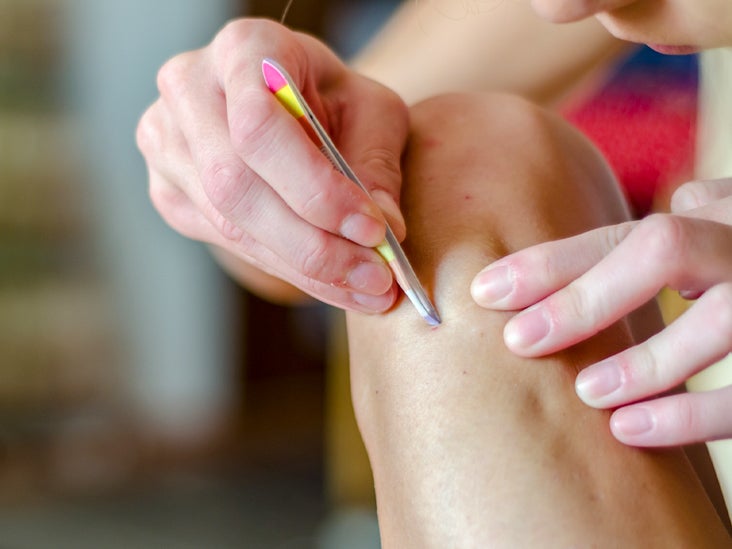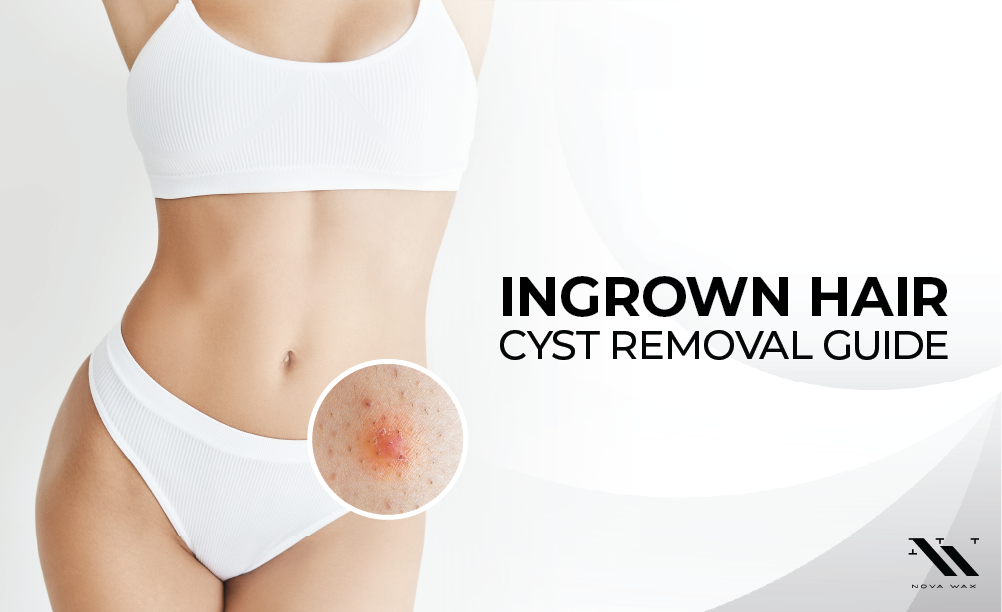Table Of Content

Although quite not permanent, depilatory methods, which include liquid or cream treatments like Nair, can produce long-lasting results as well. Treatment for ingrown hair cysts varies depending on the type of cyst involved. Some cysts may need to be treated with antibiotic ointment or surgery, while others may not need any treatment at all. If they’re not infected, some ingrown hair cysts can go away on their own. In some cases, there’s another underlying cause, such as a genetic mutation, which means they can develop again.
How to treat and prevent ingrown pubic hair
As the hair matures, it exits the skin’s surface and continues to grow. But sometimes, the hair grows crooked or curls back under before it has a chance to exit the skin. Home remedies can often treat ingrown hairs, even if the affected area becomes infected. Infections can occur if a person does not treat the hair or if they have a weakened immune system.
Things you can do to treat and prevent ingrown hairs
Try home remedies that encourage the boil to rupture and drain on its own. Bacteria from the boil can spread to other parts of your body or enter your bloodstream. If this occurs, your heart, bones, brain or other organs could be at risk for infection. Boils are caused by a staphylococcus (staph) infection, a type of bacteria that is found on the skin and inside the nose. When bacteria get into areas of the skin that have been cut or broken open, a lump filled with fluid or pus will form. This is your body’s way of trying to eliminate the infection.
How does a person get rid of ingrown pubic hair lumps?

So, or the uninitiated, an ingrown hair will appear as a little red bump or papules, similar to that of a pimple. Using a single-blade razor can reduce your chances of developing ingrown pubic hair. When you use a multi-blade razor, the blades pass over your skin several times and can cut the hair beneath the skin.
The main way to prevent them is to properly remove hair in the area. Ingrown pubic hairs are most frequently caused by hair removal in the area, Dr. Greves says. A doctor will examine the area and may prescribe an antibiotic ointment. For severe infections, they may recommend oral antibiotics. Once the hair is near the surface of the skin, grasp the ingrown hair in the center of the loop, and gently twist both ways.
Then, carefully thread the sterile needle, pin or tweezers through the exposed hair loop. Gently lift the hair loop until one end releases from your skin. To remove an ingrown hair, gently exfoliate your skin.
Use of this website and any information contained herein is governed by the Healthgrades User Agreement. The content on Healthgrades does not provide medical advice. Always consult a medical provider for diagnosis and treatment.
However, go to the doctor if you notice signs of an infection. Wash and rinse your pubic area with warm water before shaving. If you shave your pubic hair while the skin is dry, you might increase your chances of developing ingrown hairs. In some cases, you may be able to see the hair at the surface of the bump. Ingrown hair cysts commonly form on the parts of the body that people shave, such as the armpits. Razor bumps from shaving (pseudofolliculitis barbae) are a type of ingrown hair cyst.
Grim video shows pus stream out of woman’s bikini line as ingrown hairs are pulled out... - The Sun
Grim video shows pus stream out of woman’s bikini line as ingrown hairs are pulled out....
Posted: Tue, 30 Apr 2019 07:00:00 GMT [source]
This article discusses why hairs become ingrown, how a cyst can develop, and prevention methods. Ingrown hairs are not usually dangerous, but they can be intensely painful. They can also lead to an infection, which may worsen or travel to the blood without treatment. According to the National Health Service (NHS) in the UK, a person can draw out an ingrown hair by using an exfoliating scrub. Sometimes, skin cells and a fibrous substance called keratin, a protein in hair and nails, collect within the lump.
If the hairs don’t start to grow back up through the skin, you may need to try one of the following treatment options. This is when the boils are clustered together to form an area of infection. As a rule of thumb, see a doctor if you’re unsure whether the bumps on your bikini line are cysts. You should also speak with them if any suspected cyst rapidly changes in size, shape, or texture. You should see your doctor for any bikini line cyst that is bothering you, as well as if the bump is showing signs of an infection. If you have oily skin, you may occasionally develop pilar cysts.
Prompt treatment can be lifesaving in the case of skin cancer, severe skin infections, and other serious skin issues. Skin cysts often contain keratin, a protein that keeps skin strong and flexible. Sometimes, cysts arise from trapped bacteria or inflammatory response to an infection. Sometimes, a person will need medical treatment for a cyst. If a cyst becomes inflamed or infected, a doctor might suggest a steroid injection or antibiotics. Also, a steroid cream may help reduce swelling or irritation.
Infections can develop around the ingrown hair, causing pus formation, discoloration and pain, though. If you see signs of infection, you should visit your healthcare provider. To reduce the chances of getting ingrown hair cysts, keep your skin clean and gently exfoliated and moisturized. If you do shave, don't shave too close, and always shave in the direction the hair grows. Having an ingrown hair can be painful, but they're usually no cause for concern.
Learn about how to identify an ingrown pubic hair cyst. In rare cases, your healthcare provider may use a sterile surgical knife with a thin blade (scalpel) to make a small cut in your affected areas. They’ll squeeze out any pus and use sterile tweezers to remove the ingrown hair. It is common to notice round bumps appear where an ingrown hair develops. These round bumps can be papules or pustules (if they have pus).
Every piece of content at Flo Health adheres to the highest editorial standards for language, style, and medical accuracy. To learn what we do to deliver the best health and lifestyle insights to you, check out our content review principles. When you’re finished, dry the area thoroughly before getting dressed. Some home remedies may help relieve inflammation and pain. Do not use any products containing retinoids if you’re pregnant. This medication is dangerous to the baby and can cause developmental issues.
Treatment for ingrown pubic hair cysts or ingrown hair cysts anywhere else on the body is usually not necessary unless the cyst becomes infected. A vaginal boil is a pus-filled bump that develops when a hair follicle becomes infected. Boils can occur outside of the vagina on the labia, vulva or pubic area. Most vaginal boils resolve on their own with at-home treatment but in some cases, medical treatment from a health provider is needed. If ingrown hairs continue to form, see a healthcare professional to rule out any underlying causes. They may also recommend more permanent hair removal methods, such as laser hair removal, to help reduce your risk of ingrown hairs and bumps.
Ingrown hair may worsen at first as the hair grows back. The condition is also called pseudofolliculitis barbae. It develops when shaved hairs curve back into the skin, leading to inflammation. If the bump becomes too itchy or painful, there are many ingrown hair treatments that can help you heal. Most ingrown hairs will go away on their own without treatment after a few days; though, severe cases may take several weeks. You may be able to treat ingrown hair with OTC products and home remedies.


No comments:
Post a Comment